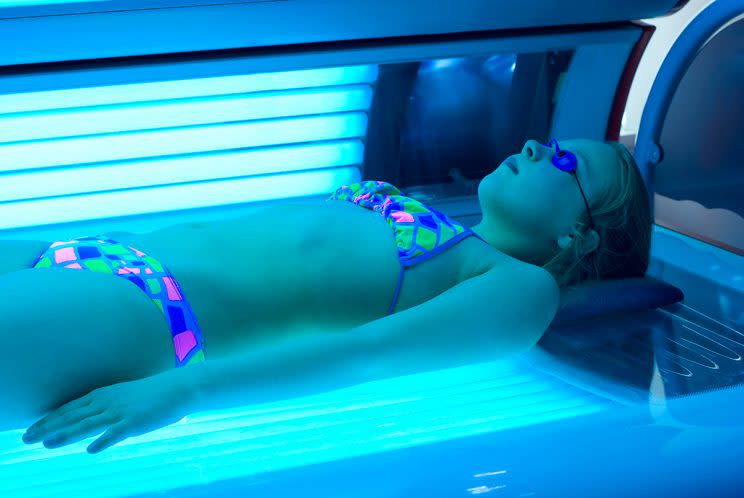1 in 5 Indoor Tanning Salons Allow Minors, Despite Bans

Underage teens can still make their way into tanning beds despite legislation that prohibits the use of ultraviolet (UV) indoor tanning facilities by minors. And many of these salons dispense false information about the “health benefits” of indoor tanning.
According to a study published in the journal Translational Behavioral Medicine, one in five tanning salons throughout the country provides services to those under 17 or 18 years of age. To test these establishments’ practices, researchers posed as teenagers and phoned tanning salons in the states that have banned indoor tanning to minors, which include Connecticut, New York, California, Delaware, Hawaii, Illinois, Louisiana, Minnesota, Nevada, Oregon, Texas, Vermont, Washington, as well as the District of Columbia.
After speaking with 412 facilities, here’s what the study team discovered:
19.9 percent said they would provide the service to a minor.
51 (12.4 percent) respondents replied with an outright “Yes,” while 31 (7.5 percent) said that it depended.
28.7 percent of the businesses in the Southern states had the lowest compliance.
87.9 percent of the businesses that would not have provided tanning services to a minor were located in states where bans have been in place for at least two years
Some of these salons cited vitamin D production, cosmetic reasons, and treatment of skin diseases as the common benefits of indoor tanning. Only 20.1 percent of the respondents stated that this practice could heighten the risk of skin cancer, and 10 percent of employees denied that there were any dangers associated with tanning beds.
The U.S. Department of Health and Human Services and the World Health Organization’s International Agency for Research on Cancer panel declared ultraviolet radiation from the sun and artificial sources — such as tanning beds and sun lamps — to be a known carcinogen (cancer-causing substance), reports the American Academy of Dermatology. The organization also states that researchers estimate indoor tanning may cause upwards of 400,000 cases of skin cancer in the U.S. each year.
“Indoor tanning facilities and the industry as a whole have a history of misleading their customers and the public about the dangers of indoor tanning,” Delphine Lee, MD, chief of dermatology and residency program director at Harbor-UCLA Medical Center in Torrance, Calif., tells Yahoo Beauty. “These fallacies are dispelled by the Federal Trade Commission’s website, which posts truths about the dangers of indoor tanning.”
Lee adds that the potential harmful effects from excessive UV radiation exposure have been “well documented” in medical and scientific journals. They include premature skin aging, immune suppression, and eye damage, such as cataracts and ocular melanoma. “Furthermore, research published in the BMJ shows that even a single indoor tanning session can increase a patient’s risk of developing squamous cell carcinoma by 67 percent,” continues Lee.
In the current investigation, the study author stated that “well-crafted age restriction laws” on the state level that would enforce penalties “are essential to reduce skin cancer risk in the vulnerable youth population.”
Lee adds, “The indoor tanning tax, which became law with the passage of the Affordable Care Act in 2010, is one small measure which attempts to deter this practice.”
Read more from Yahoo Style + Beauty:
Follow us on Instagram, Facebook, and Pinterest for nonstop inspiration delivered fresh to your feed, every day. For Twitter updates, please follow @YahooStyle and @YahooBeauty.

